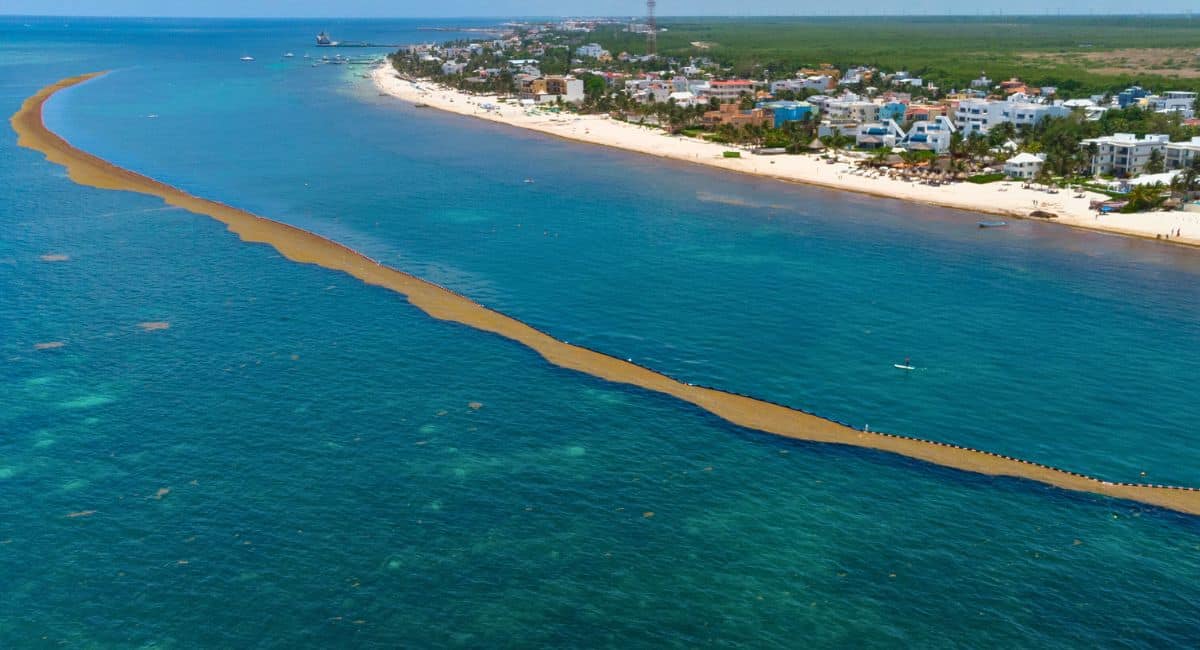Quintana Roo continues to implement strategies collect sargassum in the sea and on the coast, in an attempt to keep the beaches as beautiful as possible.
The Minister of the Navy has been in charge of the installation since the beginning of April 8,600 meters of ocean barriers to catch the sargassum in Cancun, Tulum, Playa del Carmen and other hotspots before it washes ashore, as informed by Navy Secretary Admiral Rafael Ojeda Durán.
This is just one tool adding to the arsenal of technological equipment that Quintana Roo State uses every day to keep beaches suitable for local and international tourism.
“As for Operation Sargasso, it began on April 1. We have four sweepers, 22 small ships, 11 sargaceras, one sargacero ocean ship, eight compaction belt machines and barriers.,” said Admiral Ojeda.
“Sargaceras” or “Sargacero” ships are ships equipped with special technological systems that are able to suck up and sometimes even package sargassum without negatively affecting marine life.
The authorities also announced that the work will not end with the installation of ocean barriers, but also with the cleaning, collection and transport of the material to Technological Institute Felipe Carrillo Puerto, as well as to other institutions to convert it into biodiesel.
Source: Traveling Lifestyle
Since the start of the sargassum season in 2024, more than 950 tons have been collected. Playa del Carmen expects to receive approximately 300 tons of sargassum per day in the coming weeks, as satellite reports indicate, a mass is moving toward the Yucatán Peninsula.
Although the Navy works hard to collect as much sargassum as possible, the reality is that visitors will find beaches covered in it from April to August.
That’s why it’s so important to keep yourself informed about the changing conditions on the beaches, because they aren’t completely clean or dirty every day. It depends on several factors.
The upside is that this year has the potential to see less sargassum due to favorable weather conditions in the Atlantic Ocean.
Come join us Mexico sargassum keeps an eye on FB group to receive and share information about the sargassum situation in the Mexican Caribbean.





